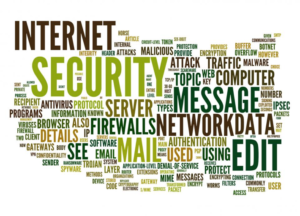
Internet security is becoming a cause for concern for many individuals and businesses around the world. This concern is based on the 2016 Internet Security Threat Report (ISTR) released by Symantec. The report highlighted that there were an estimated 1 million cyber attacks each day against individuals in 2015. It further went on to state that 2015 also saw the largest number of large data breaches ever, with the data of 9 large corporations being compromised, resulting in over half a billion personal records being stolen. Alarming numbers, aren’t they?
If you want an insight into the ways in which hackers most commonly try to steal your personal and corporate information, then here are the 5 most common ways in which they might attempt to do so;
Distributed Denial of Service (DDoS)
A distributed denial of service attack (commonly known as a DDoS attack) is a tool used by hackers to target a website in order to make it slow or inaccessible to those who wish to open it. It is executed by overloading the website domain with multiple simultaneous access requests at a given time. As most websites use web hosting services in the form of shared or dedicated servers, overloading the server with more requests than it can handle forces the website to load very slowly or in the preferable situation, make it completely inaccessible to users altogether.
As this type of attack utilizes botnets to send out multiple access requests, an individual’s personal device can also be hacked to serve as a botnet in the DDoS attack.
One of the most famous DDoS attacks was the one which was experienced by Sony Online Entertainment Services which resulted in the PlayStation Network going offline for a total of 23 days.
Browser Plug-Ins
Another way in which your computer hardware and software can be compromised is through the use of licensed or third-party browser plug-ins. There are many people who install browser plug-ins as they provide a lot of cool features which allow you to use your browser more efficiently. From allowing you to open and view different file formats to protecting them from viruses you may encounter on a website, they really add to your internet experience. However, some of them are too good to true and instead of improving your experience, they make your life a living nightmare.
The most famous case involved Adobe Flash which hackers used to display malicious ads on many websites, affecting many users as a result.
Spyware/Adware
Spyware and Adware are one of the most common tools used by hackers in an attempt to gain access to confidential information. It can be in the form of unwanted pop-ups or unauthorized downloads which occur without taking the user’s consent. These programs lure the user into downloading the malicious code by posing as a safety tool which will rid the computer of all viruses. If installed successfully, it can steal all the files on the computer, encrypt all the files present or remotely control the affected computer by restricting the original owner’s access to the system.
So, now that you know of the most common ways in which hackers can compromise your system, take precaution when you are faced with any of the aforementioned scenarios.

